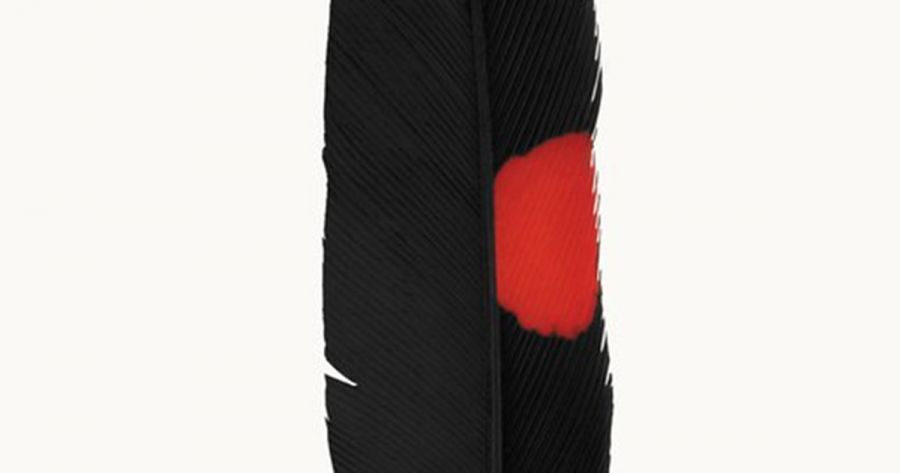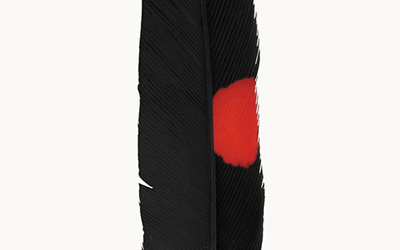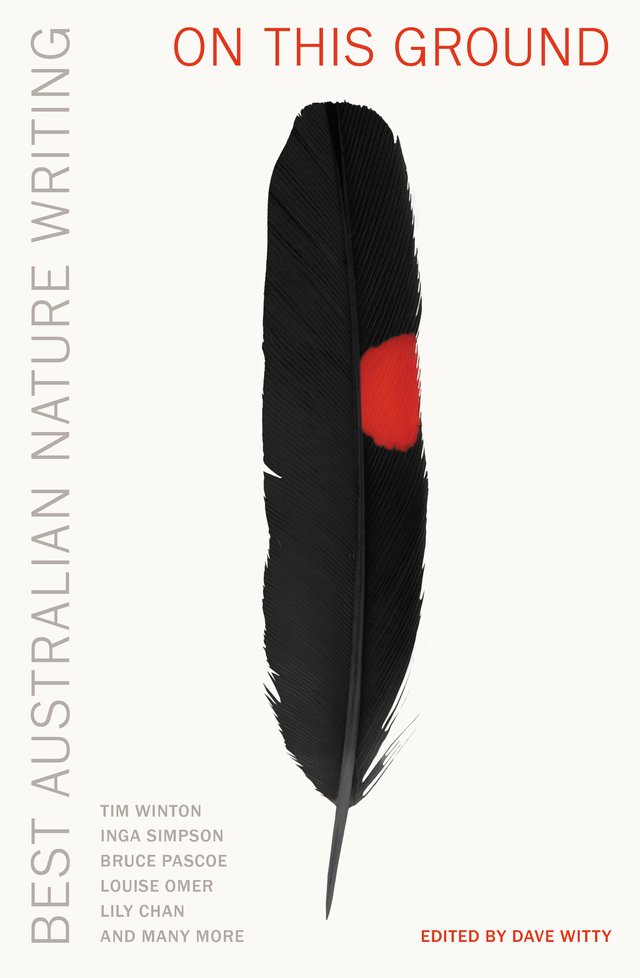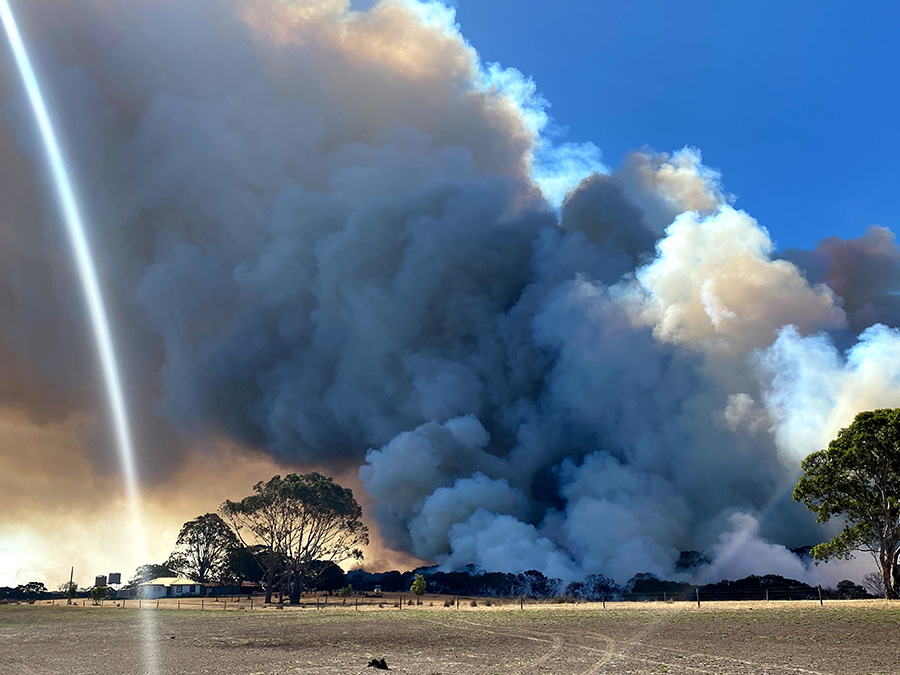
- Free Article: No
- Contents Category: Natural History
- Review Article: Yes
- Article Title: Scorched
- Article Subtitle: Acts of resistance and faith
- Online Only: No
- Custom Highlight Text:
For a creature born to life as a small songbird, days and nights can be treacherous. At any moment, a goshawk, a cat, or a goanna may be lurking, waiting to turn the songbird into supper. So these pretty little prey objects – scrubwrens and lorikeets and honeyeaters and the like – have developed an astute group behaviour. One bird spots the predator and issues an alarm call. Others hear it and zip out from behind branch and leaf to surround the threat, all of them twitting and hissing and flitting about, a mixed-species hullabaloo that together harasses the predator into pitiful retreat. This behaviour, known as a ‘mobbing flock’, is an evolutionary survival response. It is beautiful in its ingenuity, and the conviction it displays in the power of the collective. It is, to draw a metaphor from the literary ecosystem, an anthological act, a communal relay of meaning born of a shared inner urgency.
- Featured Image (400px * 250px):

- Alt Tag (Featured Image): Nicole Hasham reviews ‘On This Ground: Best Australian nature writing’ edited by Dave Witty
- Book 1 Title: On This Ground
- Book 1 Subtitle: Best Australian nature writing
- Book 1 Biblio: Monash University Publishing, $34.99 pb, 327 pp
- Book 1 Cover Small (400 x 600):

- Book 1 Cover (800 x 1200):

- Book 1 Readings Link: https://www.readings.com.au/product/9781923192935/on-this-ground--dave-witty--2024--9781923192935#rac:jokjjzr6ly9m
In the introduction to the anthology On This Ground: Best Australian nature writing, editor Dave Witty writes that if one thread connects all these essays, beyond the natural world, it is a ‘tenebrous pulse of anxiety’ about Earth’s fate. ‘Black Summer came first, followed by the floods of January 2020, cyclones off the West Australian coast, and then those first destabilising months of Covid,’ Witty writes. ‘We saw, in a short period of time, how quickly things we took for granted could be lost.’
The anthology can be read as a group response to these existential threats. It brings together voices established and new, through essays published in the past two years. Each excavates the human relationship with nature, and what it means to live in, and write about, the natural world at a time of ecological emergency. It is also a celebration of Australia’s wondrous landscapes; despite more than two centuries of white defacement, the land remains, to borrow the words of the colonisers, one of ‘beauty rich and rare’.
The collection opens with a sharp, evocative piece by Bigambul and Wakka Wakka woman Melanie Saward. It sets the tone and signals that the collection is no rhapsodic romp through fields of flannel flowers. It is one of several contributions from First Nations people, to whom non-Indigenous Australians must increasingly look for new ways of surviving in our devastated landscapes. Saward describes a visceral internal experience of nature, accessed through her ancestral connection to native birds. ‘There’s something in the way their voices echo across the sky that hits me in the place where all this grief has been living,’ she writes. ‘It doesn’t leave – the grief never ends – but we’re the same, the birds and me, and that’s all I need to not feel alone.’
Connor Tomas O’Brien, Gregory Day, and James Valentine also probe the lessons imparted by birds in three standout essays. Through his pursuit of the rare plains-wanderer, O’Brien laments the loss of habitat to urban creep, and the parts of nature we choose to ignore. Day recalls a startling dream in which he falls in love with a royal spoonbill, and argues that, even in these days of information overload, the true nature of birds escapes human knowing. Valentine, in a laugh-out-loud eco-horror, imagines a future in which barbarous brush turkeys take over Sydney. Once they developed a taste for flesh, the birds ‘went from house to house and when everyone was dead or gone, they went back and started to rip our flesh away to get to our luscious organs’.
The collection contains too many notables to mention them all. Among the most persuasive are Louise Omer’s spiritual-feminist exploration of nature writing as a devotional practice, Drew Rooke’s finely wrought meditation on ocean swimming, and Emily Mowat’s poignant recollections of working as a biologist on wind-wracked Macquarie Island. Bruce Pascoe writes searingly of Indigenous dispossession from not just the land, but the flowers upon it; the realisation that ‘no young black lovers would ever wander through the plains of orchids and pass the ice-clear tubers of lilies between their lovers’ lips …’ Mark Tredinnick turns his poetic sensibilities to his friendship with the late American nature writer Barry Lopez. And James Bradley renders compellingly the plight of islanders in the Torres Strait, where rising seas have gouged out beachside graves and left human bones bobbing in the surf.
Some essays dance at the intersection of lyricism and science, though they are not, strictly speaking, science stories. If there is any criticism to be levelled at this anthology, it is the omission of explicitly science-based essays. Its absence is deliberate, Witty explains – other anthologies in Australia already recognise such work. However, science writing, done well, can speak as powerfully as poetry to our experience of nature, and exemplars of the tradition should arguably be included in any ‘best’ nature writing collection.
 Bushfires on Kangaroo Island, 2019 (photograph by New Matilda via Wikimedia Commons)
Bushfires on Kangaroo Island, 2019 (photograph by New Matilda via Wikimedia Commons)
Nonetheless, On This Ground exalts and entertains, informs and convinces. Some essays seethe with contagious anger. The skin stings after reading Joëlle Gergis, who cannot excise her emotions from her work as a climate scientist. ‘When complete exhaustion sets in,’ she writes, ‘I stare out the window, weeping at the enormity of the challenge we face.’
This is the first Australian nature writing anthology since 2003. It is one of several recent initiatives to elevate the form and does much to correct the historical myth that Australia does not have a serious nature-writing tradition. The collection closes with writer Tim Winton, a masterful practician of Australian place-based narrative. A host of Australian writers, he notes, now refuse to avert their gaze from the natural world, the latter being an impulse that Winton describes as ‘psychologically perilous’. The scientific data is depressing. Fossil fuel interests control and confuse. ‘And the inertia of our politics on the biggest moral and material issue of our time is heartbreaking,’ Winton writes. ‘So yes, I feel scorched. And I’m angry. But I am still hopeful.’
When a bird mob gathers to fight off a predator, particular species are often the first to sound the alarm. Those that perch high, for instance, are skilled at detecting threats. Others might be loud and gregarious, so their alarm call travels further. These scouts are taking on great risk. Rather than hide, they make themselves conspicuous. They alert others to the peril so the flock may unite and endure.
Similarly, nature writing is a dangerous moral endeavour. It is an act of resistance and of faith, a steadfast resolve to make oneself a target and hold one’s ground in the presence of grave threats; to send an alarm burbling through the treetops until backup arrives.


Comments powered by CComment